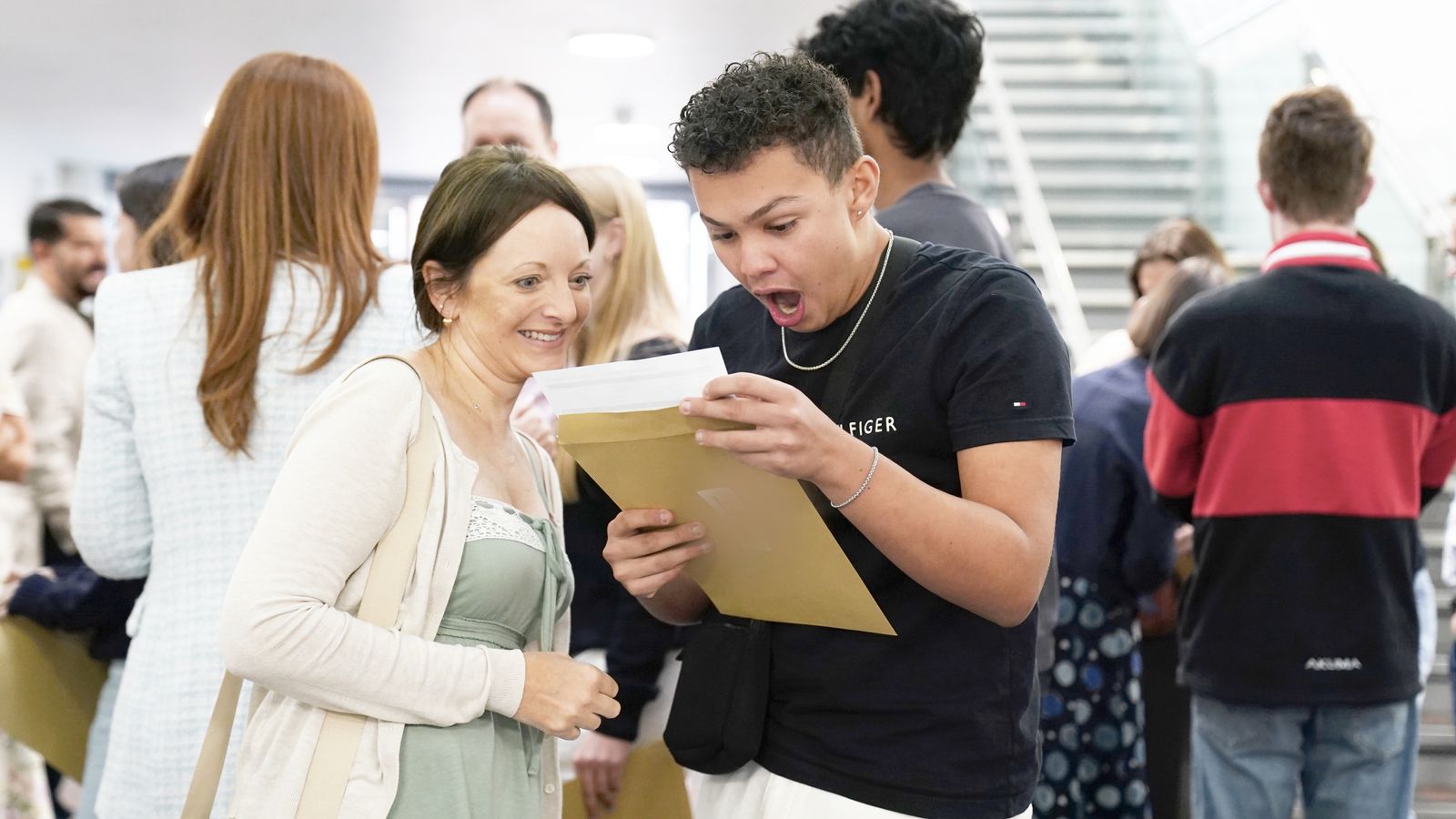Hundreds of thousands of teenagers who moved from primary to secondary school during the pandemic have received their GCSE results – with the gender gap for top grades persisting.
Nearly a quarter (24.5%) of girls achieved at least a grade 7 (A) compared to almost a fifth of boys (19.4%) – a 5.1 percentage point gap.
However, this is the closest the gap has been since 2000, when the earliest archive data is available.
It comes as 70.5% of girls were awarded at least a grade 4 (C) compared to 64.3% of boys – a 6.2 percentage point gap.
Cath Jadhav, vice president and responsible officer at GCSE providers Pearson, said the organisation views the gender gap in relation to top grades as stable over the past few years – with a decrease this year amounting to a fraction of a percentage point.
She said: “We don’t know the reasons for why that gap is narrowing… There will be lots of individual factors which affect that.”
GCSEs used to be graded with a letter-based system but it began switching to a numbers-based system in 2017 – with 9 the highest and 1 the lowest.
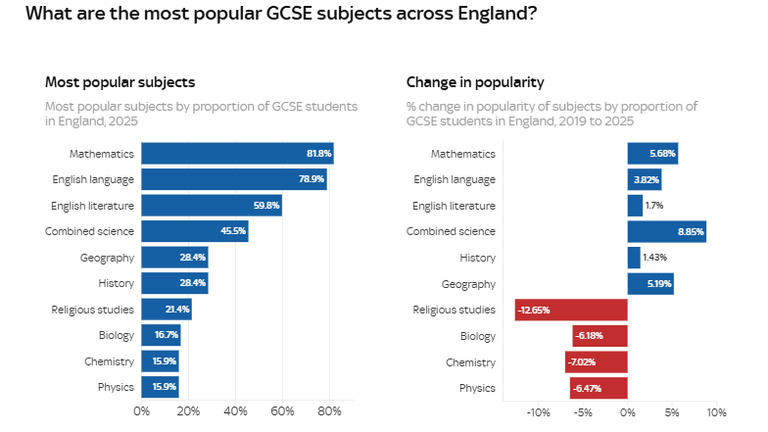
Total number of top grades slightly up
Overall, more than a fifth (21.9%) of UK teenagers who received their GCSE results were awarded a grade 7 (A) this summer.
The figure is a 0.1% percentage point increase compared to last year.
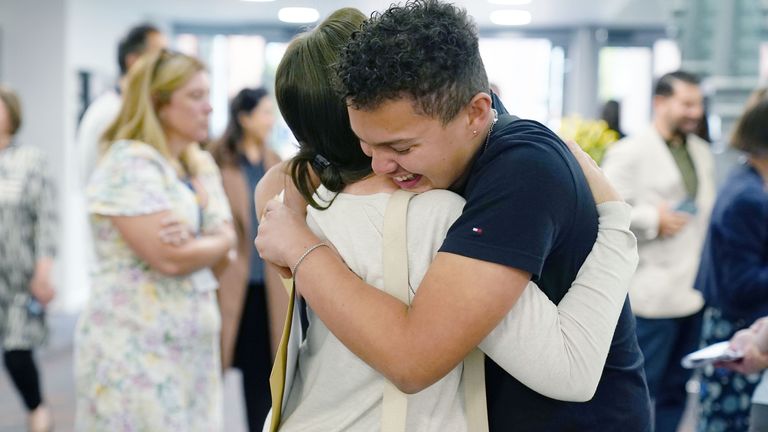
Image:
Marcus Groutage at Solihull School receiving his GCSE results.
Pic: PA
However, the number of teenagers who achieved what is considered to be a “standard pass” is down on last year – with 67.4% of entries getting at least a 4 (C) grade compared to 67.6% in 2024.
The exam results received by students in England, Wales and Northern Ireland today will help them progress to sixth form, college or training.
Regional drops in GCSE standard pass rate
London has the highest percentage of teenagers (71.6%) achieving a standard pass for any region in England – but the figure is down nearly a full percentage point from 72.5% in 2024.
In southeast England the proportion has dropped from 70.4% to 70.0%.
The figures mean London and southeast England have had larger year-on-year falls in the GCSE pass rate than all other regions.
Most regions of the UK have seen a drop in the standard pass rate this year, though by a smaller margin.
For example, in the West Midlands the figure has fallen from 63.1% to 62.9%, the lowest for any region in England, while neighbouring East Midlands is down by just 0.1 percentage points from 65.1% to 65.0%.
Eastern England was the only region to have a clear year-on-year increase in teenagers receiving a grade 4 (C) or above – up from 67.9% to 68.0%.
GCSE data related to ethnicity or income measures, such as the grades achieved by people on free school meals, is not yet available but is due to be published in the coming months.
However, today’s data does show wide disparities in top GCSE grades.
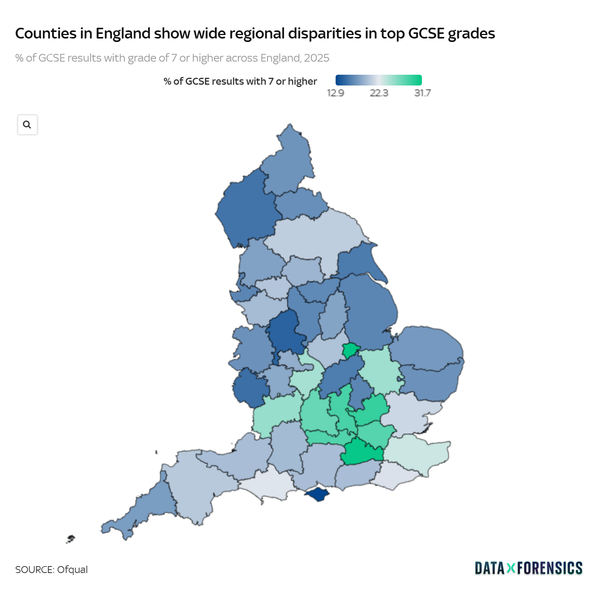
London is the region with the highest proportion of teenagers awarded the top grades of 7 (A) or above, at 28.4%, down slightly from 28.5% in 2024.
Northeast England had the lowest regional percentage at 17.8%, unchanged from last year.
The two regions have recorded the highest and lowest proportion of entries getting the top grades in each of the past three years, but the gap between them has narrowed very slightly over that period, from 10.8 percentage points in 2023 to 10.7 points in 2024 and 10.6 this year.
Before the COVID-19 pandemic the gap stood at 9.3 points in 2019.
On a national level, 31.6% of entries in Northern Ireland received grade 7 (A) or higher, above the equivalent figure for England (21.8%) and Wales (19.5%).
Northern Ireland was also ahead for teenagers awarded 4 (C) or higher with 83.5%, some way above England (67.1%) and Wales (62.5%).
Scotland has a different education system to the rest of the UK – with pupils there getting their exam results earlier this month.
Read more:
A-level regional inequalities ‘getting worse’
What this year’s A-level results show us
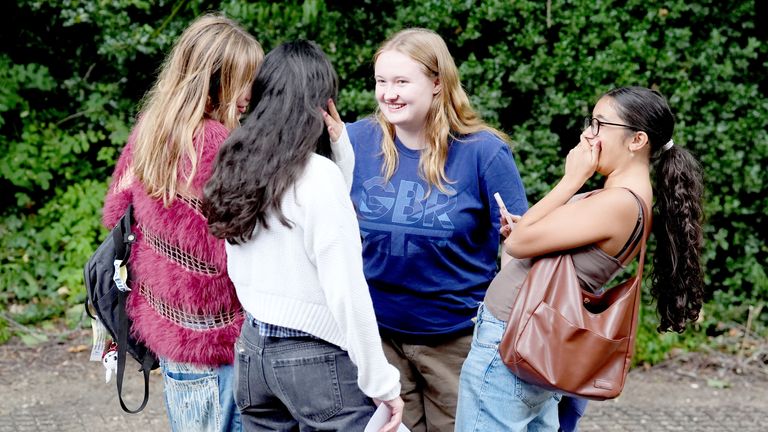
Image:
Pupils at Putney High School in London receiving their GCSE results. Pic: PA
Sir Ian Bauckham, chief regulator at Ofqual, England’s exams regulator, said: “The standard of work required to achieve a grade seven or a grade four at GCSE is the same this year as it was last year, and what we’re seeing is statistically insignificant changes at those key grades from last year to this year.
“That means basically that the underlying pattern, the underlying standard of performance amongst students from last year to this year, is stable.”
On the gender gap, Sir Ian said: “What we see today in the results is a very small apparent narrowing of the gap in performance between boys and girls.
“It’s important for people to understand that there is still a gap in the performance of boys and girls, but what we can say is that it doesn’t appear to be growing at the moment.”
